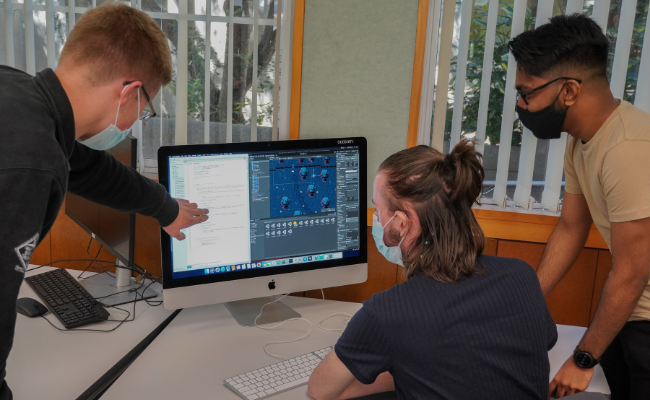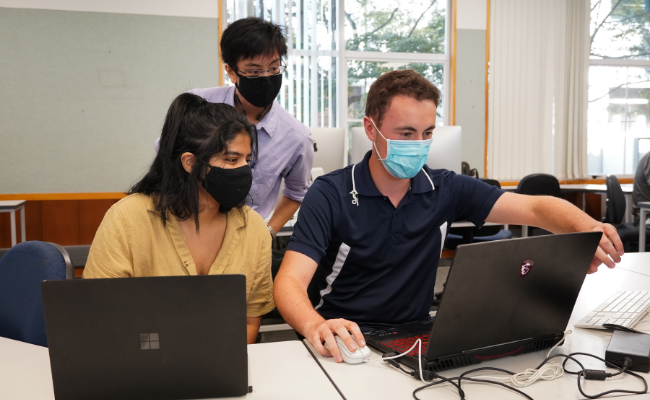
Danuda Jayawardena, Daniel Robinson and Will Rushton have been creating a game many southern Kiwis will enjoy.
Students wanting the opportunity to use their gaming passion to benefit their studies agree they've spent the summer well.
Computer Game Design is an introduction to game development which combines theory and practice, producing tangible results. Over the course of six weeks, students have teamed up to work on their own computer games as one aspect of the paper.
On one team, students Danuda Jayawardena, Daniel Robinson and Will Rushton have been creating a game many southern Kiwis will enjoy.
“Our game is called Saviour of the Lamb,” Will says. “In a tutorial we were given parameters for how our game should look, we had to create it around the idea of a ritual. The aim is to escort a lost lamb back to your farm while defending it. The lamb's name is Lucy and she is under threat by an unidentified cult who wish to sacrifice her.
“What's great about this paper is it takes the theory side of game development and the practical side and combines them in such a creative way.”
While the team have built this particular game for the purpose of summer school, Daniel says it's been a glimpse into what the future might hold.
“Will and I are both interested in Indie Game Development which is one of the reasons why we took this course, we thought, why not do it together.”
While Danuda has other plans for his studies, he absolutely recommends this paper to others with an interest in it.
“Psychology is my major and what I want to do as my career but I love gaming as a hobby. I do it out of enjoyment. I would absolutely recommend this paper. It is a bit of a fulltime job though, so I'd say to others to only take the one paper.”

Computer Game Design is an introduction to game development which combines theory and practice.
Masaaki Fukushima, Yashasvi Shetty, Thomas Berg and John Marshall set out to create a unique game from the guidelines given.
“We are making is a 2D, top-down game,” John says. “You control the character who is able to bend time by throwing spells and you use these spells to slow down obstacles and get past them. Along the way you fight enemies who shoot arrows.”
Yashasvi says their game is “pretty dramatic” but has been a fun learning experience.
“There is a whole story behind it. You play an old man who after 15 long years as a widower finds himself fading while following his once beloved wife into the darkness. After years of planning and as a former cultist and ex-best friend of the devil he knows a few things. You go into the darkness prepared for what comes next. Venture through the depths of hell with the help of your ritual time spell taught to you by the beast himself, to find the devil and save your wife.
“It's been pretty fun. I feel like it's a bit difficult in the fact that I have never touched game coding before and the course moves fast. I feel like we have learned a lot in a very short space of time. I kind of like it more than other papers because it's so practical, you're not just learning for an exam.”
John says the team learned to work with what they have to make something original and this helped shape their final product.
“The main driving aspect was that in the group, none of us are particularly strong artists and because of that we decided we would go for pixel art because we'd kind of get away with it more. A lot of pixel art games have this 'dungeony', dark theme. This was the driving focus of what inspired our ideas. This paper has definitely reinforced that game development is what I want to do.”
Computer Game Design has been a popular paper over Summer School. Keep an eye out online for the finished games which will make an appearance in late February.
Kōrero by Internal Communications Adviser, Chelsea McRae
